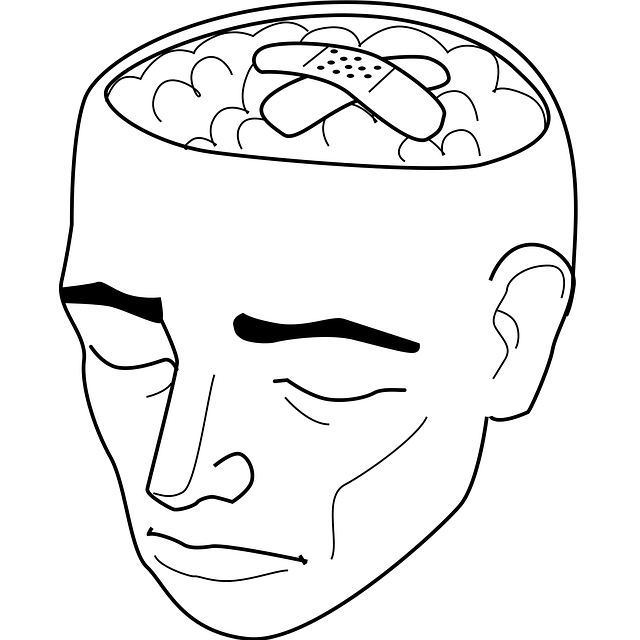The media's portrayal of mental illness significantly shapes public perception, with positive depictions fostering empathy and encouraging support while negative representations perpetuate stigma. Broomfield Interpersonal Issues Therapy (BIIT) offers a novel approach by focusing on interpersonal relationships and emotional regulation, challenging stigmatized narratives. Through diverse media representation and collaboration with experts like BIIT, the industry can promote accurate understanding, educate audiences, and foster supportive communities, ultimately advocating for better mental health policies.
Mental illness representation in media significantly influences public perception and understanding. In this article, we explore the profound impact of media portrayal on mental health attitudes and introduce the Broomfield Interpersonal Issues Therapy (BIIT) approach as a solution-focused alternative. BIIT offers a unique perspective, challenging stereotypical narratives and promoting accurate, compassionate representations of mental illness in media. We provide strategies to foster responsible media coverage, enhancing public awareness and support for those facing mental health challenges.
- Understanding the Impact of Media Portrayal on Mental Health Perception
- The Broomfield Interpersonal Issues Therapy Approach: A Solution-Focused Perspective
- Strategies for Promoting Accurate and Compassionate Mental Illness Representation in Media
Understanding the Impact of Media Portrayal on Mental Health Perception

The media’s portrayal of mental illness can significantly shape public understanding and perceptions, which subsequently influence attitudes towards individuals living with such conditions. Media stories often play a crucial role in either perpetuating stereotypes or challenging societal norms surrounding mental health. Positive representations can foster empathy, encourage support, and promote open conversations, while negative or inaccurate depictions may lead to further stigma and isolation for affected persons. For instance, portraying characters struggling with depression or anxiety as weak or overreacting reinforces the idea that seeking help is a sign of weakness, deterring others from seeking Broomfield Interpersonal Issues Therapy or similar professional support.
On the contrary, media platforms have the potential to empower individuals by showcasing recovery stories and highlighting the effectiveness of treatments like resilience building through therapy. Promoting emotional well-being through these channels can inspire viewers to develop coping skills and adopt healthy habits. By presenting diverse narratives that challenge preconceived notions, media outlets can contribute to a more nuanced understanding of mental illness, encouraging empathy and acceptance in society, and ultimately fostering an environment conducive to recovery.
The Broomfield Interpersonal Issues Therapy Approach: A Solution-Focused Perspective

The Broomfield Interpersonal Issues Therapy (BIIT) Approach offers a novel perspective in addressing mental illness representation in media and challenging stigmatization. This solution-focused therapy emphasizes the interconnectedness of interpersonal relationships and their impact on emotional regulation, which is often disrupted in individuals struggling with mental health issues. By fostering cultural sensitivity within mental healthcare practice, BIIT aims to provide anxiety relief and promote healthier coping mechanisms. The approach encourages clients to identify and change maladaptive patterns in their interactions, helping them build more robust support networks and improve overall well-being.
BIIT’s focus on emotional regulation and interpersonal dynamics is particularly effective in challenging the stigmatized portrayal of mental illness in media. It shifts the narrative from a disorder-centric view to a person-centric one, acknowledging that mental health challenges stem from complex social and cultural factors. This therapy empowers individuals to take control of their stories, fostering self-acceptance and resilience, and ultimately contributing to a more nuanced and empathetic representation of mental illness in popular culture.
Strategies for Promoting Accurate and Compassionate Mental Illness Representation in Media

Media plays a pivotal role in shaping societal perceptions about mental health, making accurate and compassionate representation crucial. To promote positive change, several strategies can be employed. Firstly, encouraging diversity among writers and creators ensures diverse narratives and experiences are captured, reflecting the wide spectrum of mental illness. This includes incorporating characters with various racial, ethnic, and cultural backgrounds, as well as those from different socioeconomic statuses, to avoid stereotypes and provide a more nuanced understanding.
Secondly, collaboration with mental health professionals like those at Broomfield Interpersonal Issues Therapy can add layers of authenticity. These experts can consult on storylines, ensure accurate portrayal, and educate media producers about the complexities of various disorders. Additionally, involving individuals who have personally experienced mental illness in production processes, either as consultants or through Mental Wellness Podcast Series Production, allows for firsthand insights and enhances empathy within the media. This collective approach contributes to a more enlightened understanding of mental wellness, fostering communities that are supportive and informed by Mental Health Policy Analysis and Advocacy.
Media representation of mental illness plays a significant role in shaping public perception. By adopting solution-focused approaches like the Broomfield Interpersonal Issues Therapy, we can challenge negative stereotypes and promote understanding. Through strategic initiatives encouraging accurate and compassionate media portrayal, we can foster a more inclusive society that supports individuals dealing with mental health issues. This multi-faceted approach is crucial in improving mental health discourse and enhancing societal well-being.














